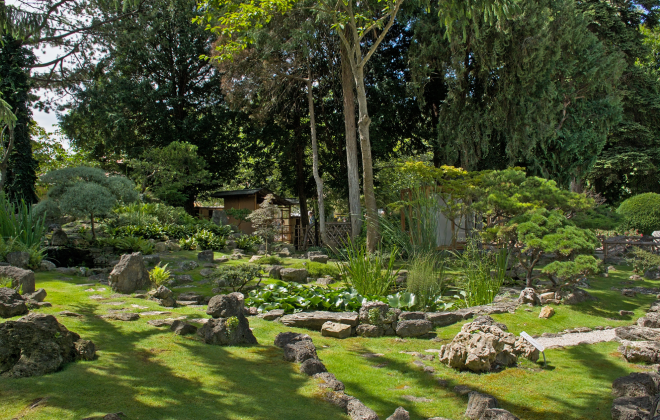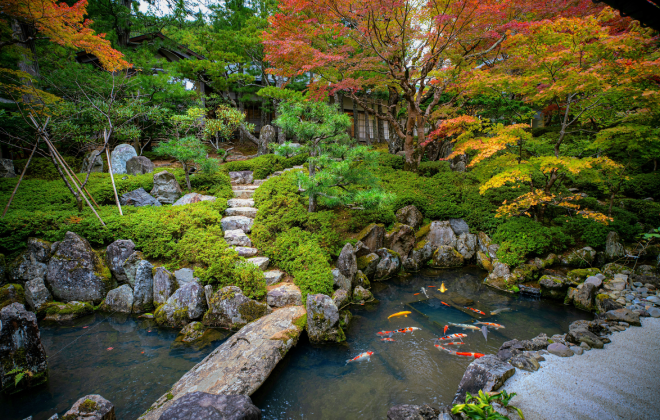Tour destinations
Responsible tourism


The Cowra Japanese Garden and Cultural Centre is recognised by the National Trust as a site of 'Significant Cultural, Architectural and Historic Importance. While there are many Japanese gardens around the world, this one holds deeper meaning. It is not just a garden; it stands as a powerful symbol of goodwill, fostering reconciliation and peace. Cowra Japanese Garden covers five hectares - the largest of its kind in the southern hemisphere.
On 5 August 1944, over 1,000 Japanese prisoners attempted a mass escape from the POW camp, resulting in the deaths of 231 prisoners and 5 Australian soldiers. The Japanese soldiers are buried nearby, and their graves were tended by local members of the RSL before ceding to Japan in 1963. Over time, mutual respect grew between the people of Cowra and Japan, leading to the idea of a garden.

Take the first step toward your next adventure—explore our tours or get a free brochure sent to your inbox.
Cowra is a pretty town rich in history, culture, and natural beauty. Set on the banks of the Lachlan River (Galari Bila) in central New South Wales, it’s most famously known for the 1944 Cowra Breakout, the largest WWII Prisoner of War escape in Australian and modern military history.
Designed by Ken Nakajima (1914–2000), the Japanese Garden Cowra is dedicated to ongoing peace and reconciliation. It follows the Edo period style of strolling garden. Its rocky hillside, manicured hedges, waterfalls, streams and lakes create a peaceful setting, home to various aquatic birds. Notable features of the garden include a Bonshō (bell), a traditional Edo cottage, a Bonsai house, and an authentic open-air tea house serving Japanese delicacies and sweets.
Other places to explore are Cowra’s Prisoner of War Camp site, the Japanese War Cemetery and the Visitors Centre where visitors can learn more about this unique chapter in Australia’s history.


Embark on the Cowra Heritage Walk, which takes you past historic landmarks such as the town's first hotel, the 1860 stone flour mill, the gothic-style St Raphael’s Church, the federation-style courthouse, Cowra Public School, and Ilfracombe, the town’s oldest home built in 1879.
Discover Cowra’s Boutique Wine Region, where you can meet the makers and sample award-winning, often organic, wines. Nature lovers will enjoy the peaceful surroundings of the Lachlan River, perfect for fishing, kayaking, or simply soaking in the tranquility. Visit local galleries, the Cowra Sculpture Park, Art Gallery, laneway art, water tank murals or the Cowra Bridge Pylons featuring Aboriginal murals.
Just an hour from Cowra is Young, home to the lively National Cherry Festival, celebrating the town’s farming heritage and vibrant community. The festival features fun events like the cherry pie-eating and cherry-pip-spitting competitions. There’s a street parade, farmers' markets, live music and of course, the freshest cherries.
The Cowra Japanese Garden and Cultural Centre covers five hectares and was created to honour and strengthen the historic and ongoing bond between the people of Cowra Shire and Japan.
Many Japanese believe that the Buddha guided the people of Cowra to create this garden, offering peace and rest to the spirits of the fallen soldiers.
Cowra is situated 308 kilometres west of Sydney.
The Cowra region in New South Wales is the traditional home of the Wiradjuri Aboriginal people.
Cowra comes from an Aboriginal word meaning ‘the rocks.’ The town was originally known as ‘Coura Rocks.’
Our team is always happy to help if you have any questions about us or our tours. Fill out our form and we will get back to you soon.